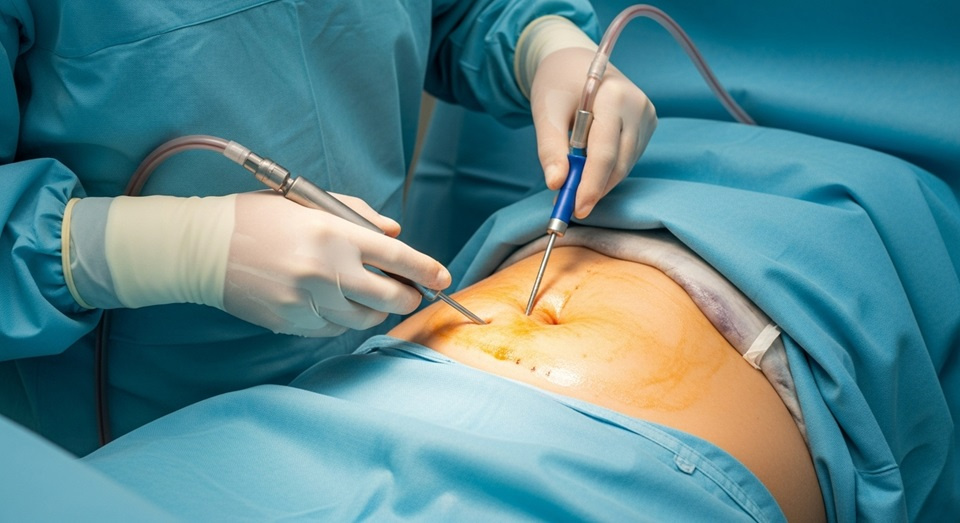
Liposuction of the Tummy: A Comprehensive Guide for 2025
Liposuction of the tummy, also known as abdominal liposuction, is a popular cosmetic procedure designed to remove stubborn fat deposits from the midsection, sculpting a more contoured silhouette. In 2025, advancements in technology have made it safer and more effective, with techniques like tumescent liposuction minimizing bleeding and swelling through fluid injection. For example, a patient in Dhaka undergoing the procedure reported a slimmer waistline within weeks, boosting confidence for daily activities. Compared to non-invasive treatments like CoolSculpting, which freezes fat cells but may require multiple sessions, liposuction offers immediate, dramatic results in a single surgery. However, it’s not a weight-loss solution but rather a body-contouring tool for those near their ideal weight. Guidance: Consult a board-certified surgeon to assess candidacy, discussing medical history and expectations to ensure suitability. Mayo Clinic guide.
The procedure targets subcutaneous fat beneath the skin, sparing deeper visceral fat around organs, making it ideal for localized bulges resistant to diet and exercise. Real-world applications include post-pregnancy recovery, where mothers regain pre-baby figures. Compared to tummy tucks, which remove excess skin and tighten muscles but involve longer recovery, liposuction is less invasive with smaller incisions. Patients often combine it with other procedures for enhanced results. Guidance: Prepare by maintaining a stable weight and quitting smoking six weeks prior to optimize healing.
In 2025, robotic-assisted liposuction enhances precision, reducing surgeon fatigue for better outcomes. Guidance: Research clinics with certified robotic systems for safety.
Who Is a Good Candidate for Tummy Liposuction?
Good candidates are adults within 30% of their ideal weight with firm, elastic skin and localized fat pockets, free from serious medical conditions like heart disease or diabetes that could complicate surgery. For instance, a 35-year-old office worker in Sylhet with exercise-resistant belly fat qualified after a health screening. Compared to those with loose skin from weight loss, candidates need good skin tone for smooth results post-fat removal. Smokers or those with poor healing are often advised against it. Guidance: Undergo a thorough medical evaluation, discussing goals and risks with your surgeon to confirm eligibility.
Age isn’t a barrier if health is optimal, but younger patients typically have better skin retraction. A 45-year-old teacher achieved excellent results due to consistent fitness. Compared to men, women often seek it post-childbirth for diastasis recti correction when combined with tummy tucks. Guidance: Maintain realistic expectations, understanding liposuction reshapes but doesn’t prevent future weight gain.
Pregnant or breastfeeding women are not candidates, as hormonal changes affect results. Guidance: Wait six months post-breastfeeding before considering.
Types of Tummy Liposuction Techniques
Tumescent liposuction involves injecting a saline solution with lidocaine and epinephrine to numb the area and constrict blood vessels, reducing pain and bleeding. A patient in Chittagong experienced minimal bruising with this method. Compared to traditional dry liposuction, tumescent is safer with faster recovery. It’s widely used for tummy areas due to precision. Guidance: Choose surgeons experienced in tumescent for optimal safety.
Ultrasound-assisted liposuction (UAL) uses sound waves to liquefy fat before removal, effective for fibrous areas like the upper abdomen. A 40-year-old man saw smoother contours post-UAL. Compared to laser-assisted, UAL minimizes skin damage. Guidance: Discuss skin type with your doctor to select UAL if denser fat is present.
Power-assisted liposuction (PAL) employs vibrating cannulas for easier fat extraction, reducing surgeon effort. Guidance: Opt for PAL in larger areas for shorter surgery times.
The Liposuction Procedure: Step-by-Step
The process starts with a consultation, where the surgeon assesses fat distribution and skin elasticity, discussing techniques and expected outcomes. Blood tests and medical history review ensure safety. For example, a Rajshahi resident’s consultation revealed the need for combined PAL. Compared to virtual consultations, in-person allows accurate measurements. Guidance: Prepare questions about scars and recovery.
Pre-surgery involves fasting and avoiding medications like aspirin to reduce bleeding risks. Anesthesia is administered, typically local with sedation for tummy areas. Guidance: Arrange transportation home post-procedure.
During surgery, small incisions are made, cannulas inserted to suction fat. Post-op, compression garments are fitted. Guidance: Follow garment instructions for swelling control.
Risks and Potential Complications
Common risks include bruising, swelling, and temporary numbness, resolving within weeks. A patient experienced mild bruising but recovered fully. Compared to tummy tucks, liposuction has lower infection rates. Guidance: Monitor for unusual swelling and contact your doctor.
Serious complications like fat embolism are rare but possible if fat enters bloodstream. Guidance: Choose accredited facilities for safety.
Uneven contours can occur if fat removal is inconsistent. Guidance: Select experienced surgeons to minimize this.
Recovery Timeline for Tummy Liposuction
Days 1–3 involve rest, with swelling peaking and pain managed by medication. Light walking prevents clots. A Khulna patient resumed desk work by day 4. Compared to arm liposuction, tummy recovery is longer due to area size. Guidance: Use ice packs for swelling.
Weeks 1–4 see gradual return to activities, avoiding strenuous exercise. Guidance: Wear compression garments 24/7.
Months 3–6 reveal final results as swelling subsides. Guidance: Maintain healthy diet for lasting effects.
Maintaining Your Liposuction Results
Adopt a balanced diet rich in fruits and vegetables to prevent fat return. A Barisal patient kept results by eating 2,000 calories daily. Compared to fad diets, consistent nutrition sustains outcomes. Guidance: Track intake with apps like MyFitnessPal.
Regular exercise, like cardio and strength training, tones the area. Guidance: Aim for 150 minutes weekly.
Hydration and skincare prevent sagging. Guidance: Drink 8 glasses daily.
Liposuction vs. Tummy Tuck
Liposuction removes fat, ideal for those with good skin elasticity, while tummy tuck tightens muscles and removes skin. A patient chose liposuction for minimal scarring. Compared to tummy tuck’s longer recovery, liposuction allows quicker return to work. Guidance: Consult for combination if needed.
Tummy tuck suits post-pregnancy cases with loose skin. Guidance: Evaluate skin tone first.
Liposuction is less invasive. Guidance: Choose based on goals.
Embracing Tummy Liposuction
Tummy liposuction in 2025 offers safe, effective fat removal with advanced techniques. By understanding candidacy, procedures, and maintenance, patients achieve lasting results.